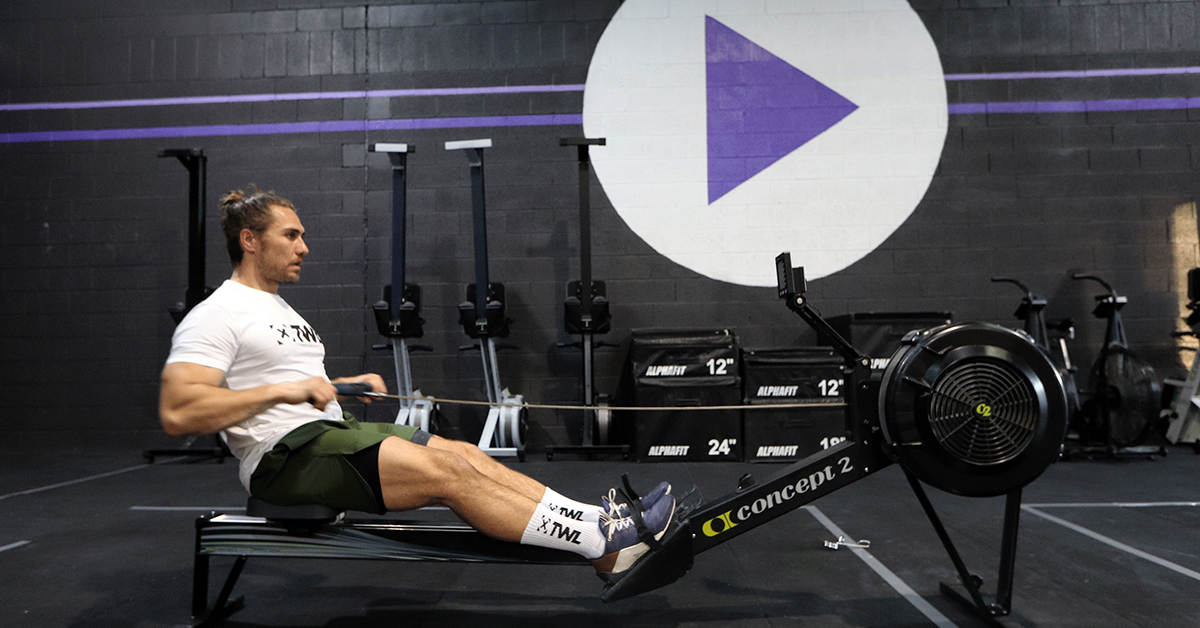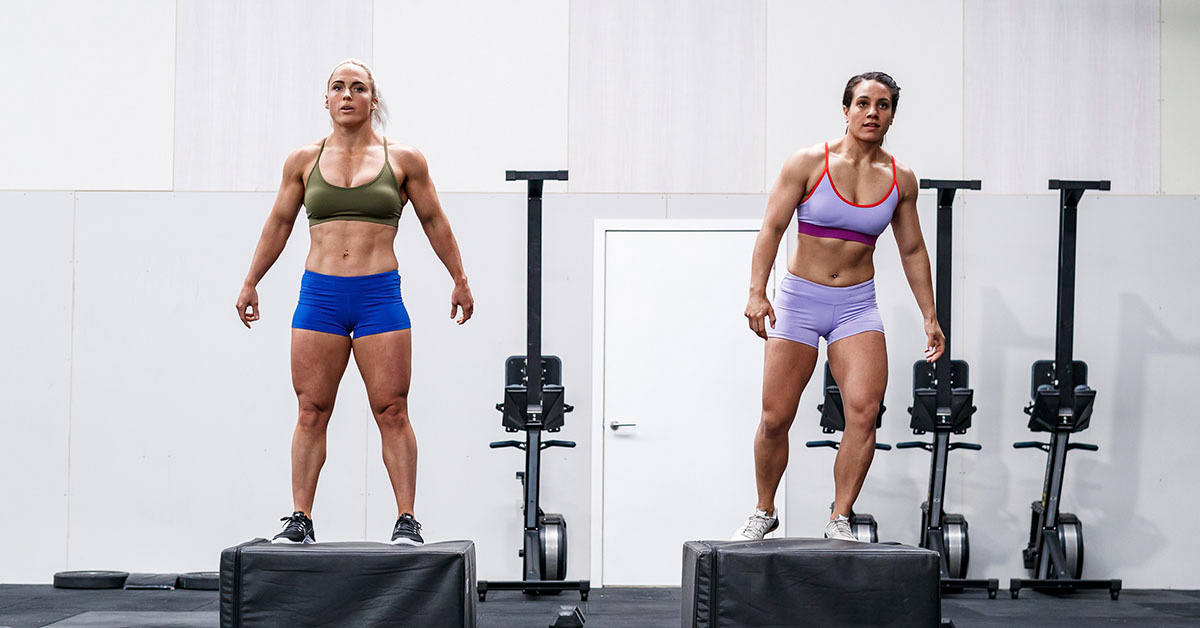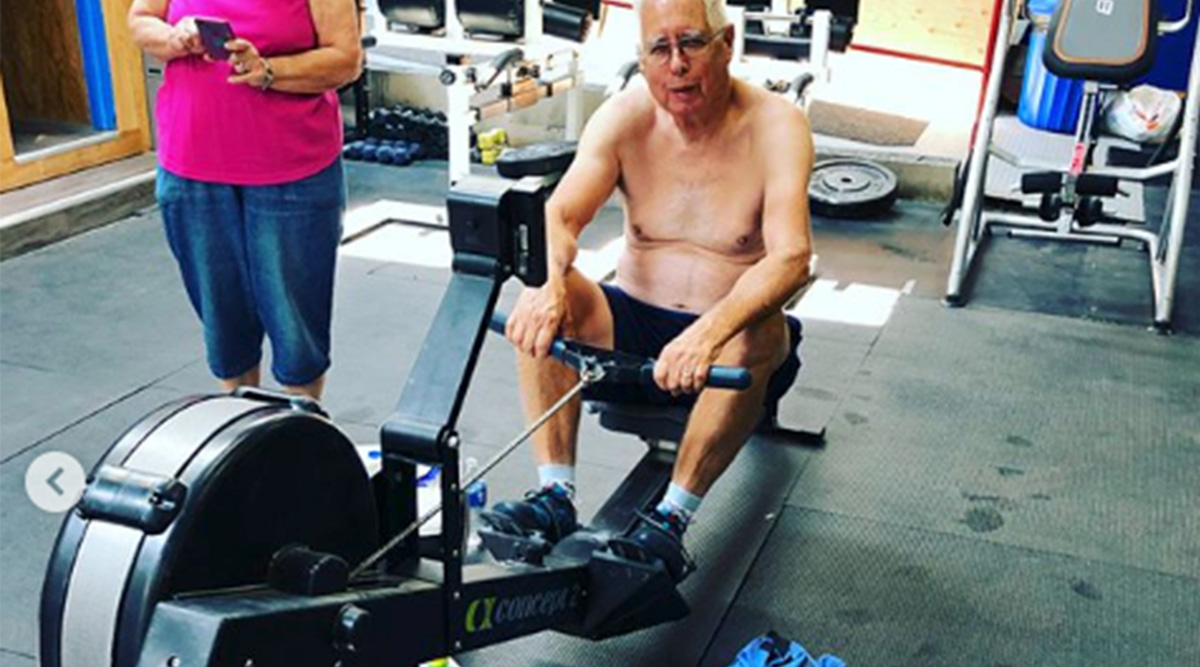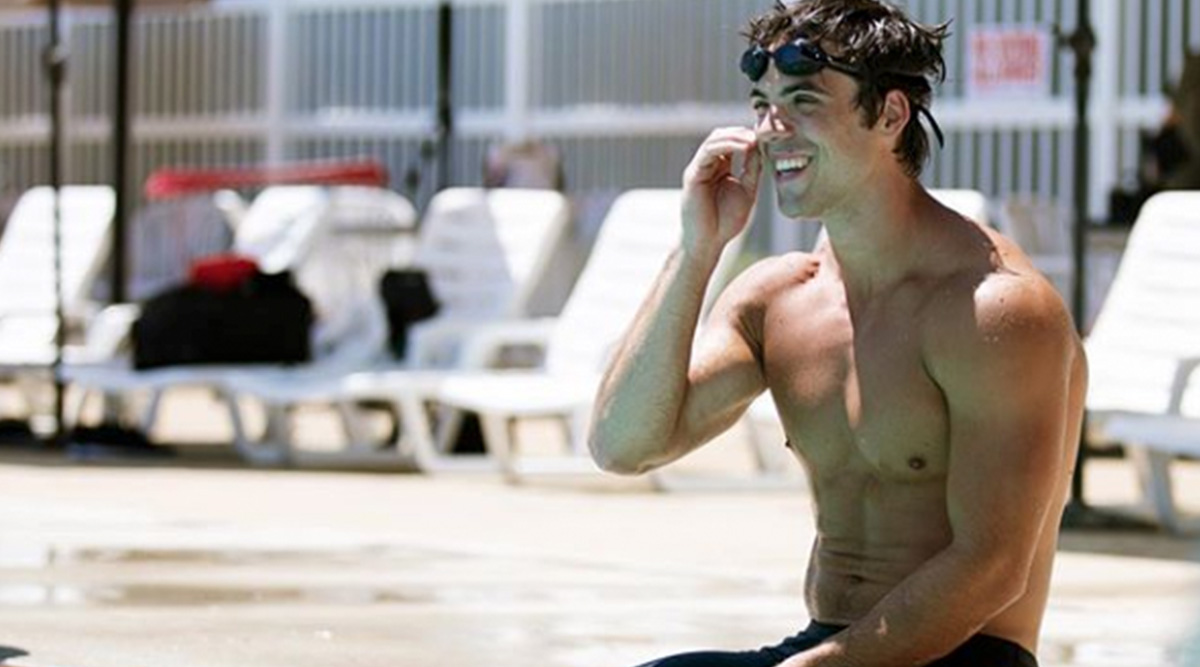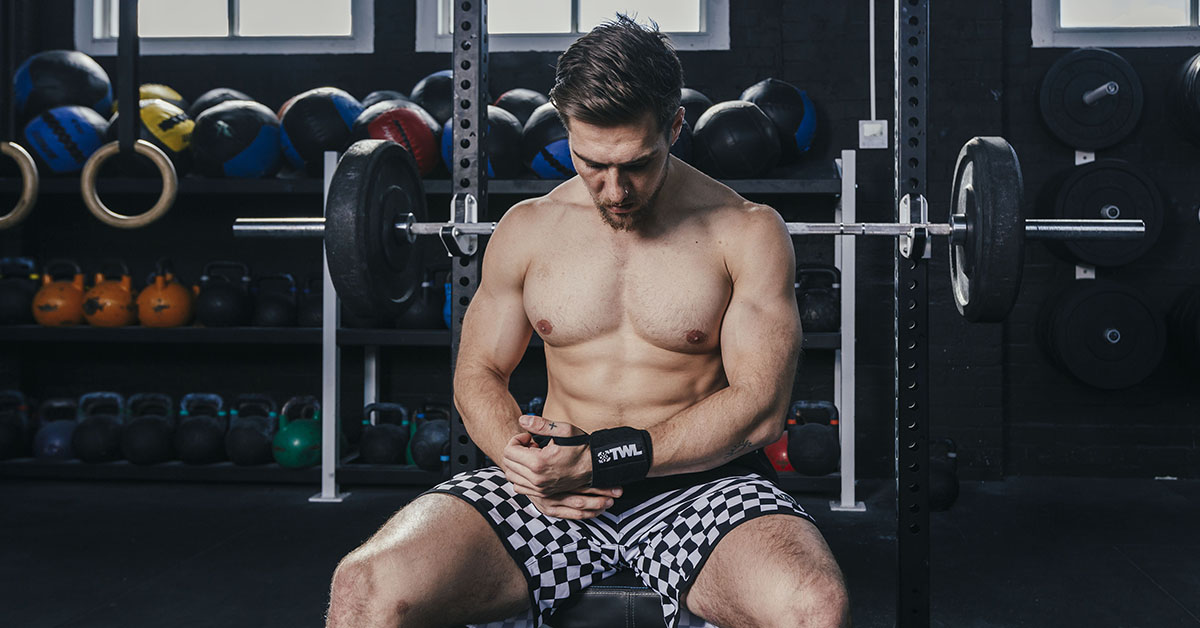Legs, hips, arms. Arms, hips, legs. This back-and-forth rhythm defines proper rowing technique, but isn’t there more you can do to travel more efficiently from Point A at the bottom of the row (the catch) to Point B at the top?
The short answer: yes.
The long answer:
4 Tips for More Efficient Rowing
1. Relax Your Elbows
Too often, whether at the box or globo gym, we see people rowing with their elbows up by their armpits. Not only is this not a good position for your shoulders (usually, high elbows mean your shoulders are hunched), but it also means you’re expending unnecessary energy.
View this post on Instagram
Instead of bending your arms into awkward chicken wings, relax your shoulders and let your elbows run naturally beside your torso, like they would at the bottom of a bench press.
A helpful cue: the rower handle should come to the bottom of your sternum, not all the way up to your collarbone.
Remember, the more you’re trying to force yourself into an unnatural position, the more work you’re probably doing. This equates to greater fatigue. Stay relaxed and calm. It might seem counterproductive to keep your body loose, but you’ll find that this actually helps you go for longer.
And on a similar note…
2. Keep a Loose Grip
Believe it or not, your grip matters. You don’t need to hang onto the handle for dear life — it’s simply not necessary. Similar to what we described above, if you’ve got a very flexed, engaged grip, then that means you’re doing more work, and this particular kind of work isn’t needed. All it’s going to do is wear your hands out faster.
Only hang on to the handle as much as you need to so that it doesn’t go flying. Pay attention to your fingers. Keep them light and loose.
3. Push Your Feet Into the Pads
Your legs are so much stronger than you give them credit for, and they’re certainly stronger than your arms. Use them to your advantage! Rowing isn’t simply an upper body workout.
In truth, your legs drive most of the rowing motion. Sure, your torso and arms pull, but they work from the momentum coming from your legs. Don’t believe us? Try rowing without using your lower body at all. Keep it completely still. It’s a lot more exhausting. To make sure you’re driving from your whole legs, not just your quads, start your row by pushing your feet into the pads.
Remember to keep the proper order and rhythm to your row — your seat and the rower handle should move at the same pace while your legs are working, and that initial push shouldn’t find your upper body in a more prone position than when you started.
View this post on Instagram
Really visualize using your feet and legs to explode off the pads, and your arms sort of just finish the job. Not only does it make rowing easier, but you’ll shave precious seconds off your time.
4. Stop Scooping
You know what the say: the quickest path between two points is a straight line. You want the handle to move from Point A to Point B on the most direct path — so pull straight back on the handle.
Keep in mind that you’re not actually rowing a boat, and (if we’re all on the same page) you’re not training to be able to row a boat. You’re here for the fitness benefits. So, don’t scoop the handle down and up. Just pull straight back. (BTW, if the handle sometimes gives you a tender grip, you might consider taping up first.)
If on the way back down, you find yourself maneuvering the handle up and over your legs, ask someone to check your rhythm. Most likely, you’re bending your knees too early — a common rowing mistake that leads to wasted energy. You shouldn’t have to move the rower handle around you knees. Your knees should be getting out of the way first.
Rowing is a fairly simple exercise, but that doesn’t mean it’s easy. While these adjustments might seem tiny, they have a big impact. There’s always more that can be fine-tuned on the row, but these tips should set you on course to a more efficient row that has you pounding out those meters in better time and with better aerobic benefits. Anchors away!

